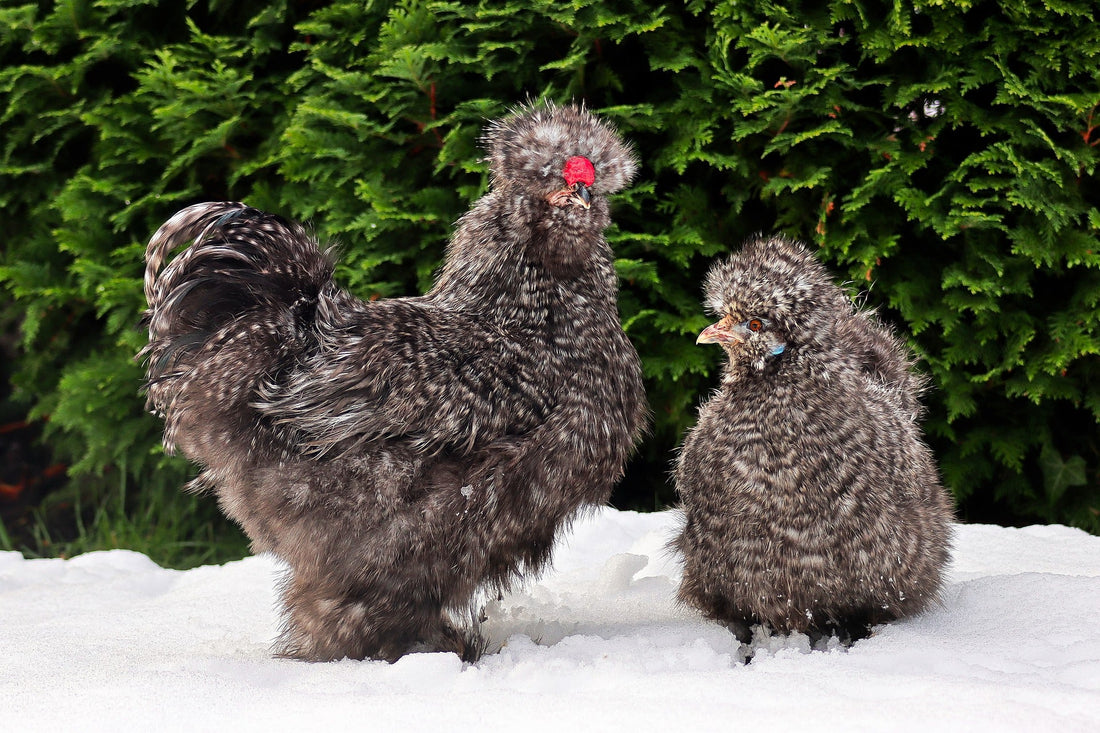Once upon a chill, in the bustling barnyards and serene backyards of our world, thrives a diverse and often misunderstood community of feathery inhabitants – the chickens. These clucking, strutting, egg-laying marvels are not just a delight to behold but are also a fascinating study in adaptation and resilience, particularly when it comes to weathering the cold. So, grab your warmest blanket and a cup of hot cocoa, as we embark on a whimsical journey into the world of chickens and their remarkable ability (or sometimes, a lack thereof) to withstand the winter's frost.
The Science of Fluff: Understanding Cold Resistance in Chickens
Chickens, like many creatures, have developed various physiological traits to survive in different climates. For some, it's all about the feathers – dense, fluffy, and layered like the most exquisite winter coat. These feathered fortresses provide insulation, trapping warm air close to the body. Then there's the matter of body fat, nature's own thermal blanket, offering an extra layer of warmth. And let’s not forget behavior – from huddling together for warmth to reducing activity to conserve energy, chickens have their own winter survival strategies.
The Champions of Chill: Top Cold-Resistant Breeds
Let’s meet some of the stars of the cold-weather chicken catwalk:
The Plymouth Rock: Dressed to impress in its dense, fluffy plumage, this breed laughs in the face of cold. Hardy and friendly, Plymouth Rocks are the quintessential winter warriors.
The Sussex: This breed is like the all-terrain vehicle of the chicken world. Robust, with a dense feather coat, the Sussex can handle both cold and heat with admirable aplomb.
The Wyandotte: If chickens had a winter fashion show, Wyandottes would be the showstoppers. With their stunning plumage and rose combs less prone to frostbite, they thrive in colder climates.
When the Cold Bites: Challenges for the Less Hardy Breeds
Not all chickens strut happily in winter wonderlands. Mediterranean breeds, like the sleek and sprightly Leghorn, prefer sunbathing to snowball fights. These breeds have lighter feathering and are more suited to warmer climates. In cold weather, they need extra care – think insulated coops, warm bedding, and a diet rich in energy to help them maintain body heat.
Coop Comforts: Caring for Chickens in the Cold
Caring for chickens in winter isn't just about turning their coops into luxury retreats (though that sounds egg-ceptional). It's about practical, breed-specific care:
Shelter: Ensure the coop is well-insulated, draft-free, but still ventilated. Think cozy, not stuffy.
Diet: A hearty, nutritious diet helps. Think of it as fuel for their internal furnaces.
Water: Keep it ice-free. No chicken likes a frozen beak dip.
The Art of Adaptation: Breeding and Evolution
Through selective breeding, many chicken breeds have been fine-tuned for specific climates. It's a fascinating blend of nature and nurture, where human intervention has helped shape these breeds' ability to handle the cold. Some breeds, like the frosty-feathered Siberian, have evolved over time to strut comfortably through snowflakes.
Busting Myths: Separating Fact from Fowl Fiction
Let's crack some common myths:
Myth: Chickens need sweaters in winter.
Fact: Most don't. Proper shelter and care are usually enough. Plus, sweaters can hinder natural preening and cause stress.
Myth: Chickens can't lay eggs in cold weather.
Fact: They can, though production might slow down. Ensuring enough light and a nutritious diet helps keep the eggs coming.
A World of Wings and Wisdom
As our feathery tale comes to a close, it’s clear that whether clad for a winter gala or more suited for a beach party, each chicken breed brings its own unique charm and challenges. Understanding these breeds, their needs, and how they cope with the cold isn't just fascinating – it's essential for anyone keen on keeping these delightful birds as part of their family or farm.
In the end, it's not just about the fluff and feathers. It's about understanding, care, and respect for these remarkable creatures and their diverse, whimsical world. So, the next time you see a chicken, whether it's strutting through snow or basking in the sun, remember – there's a whole world of adaptation, resilience, and feathery fascination just waiting to be explored.*
And they all clucked happily ever after.

